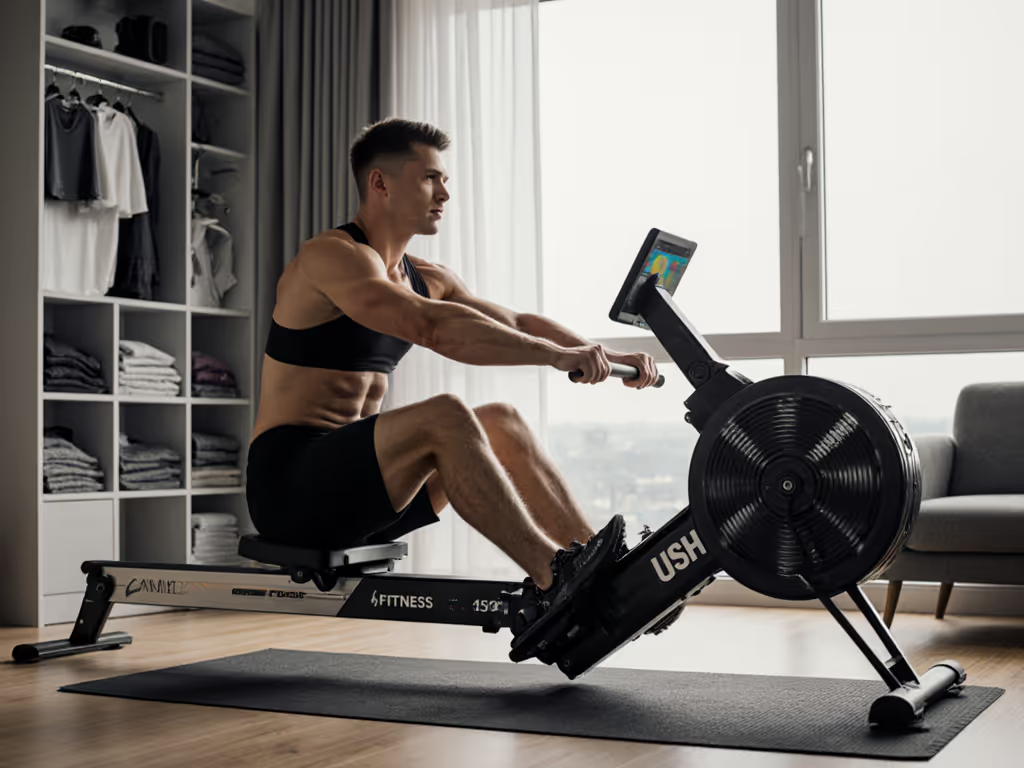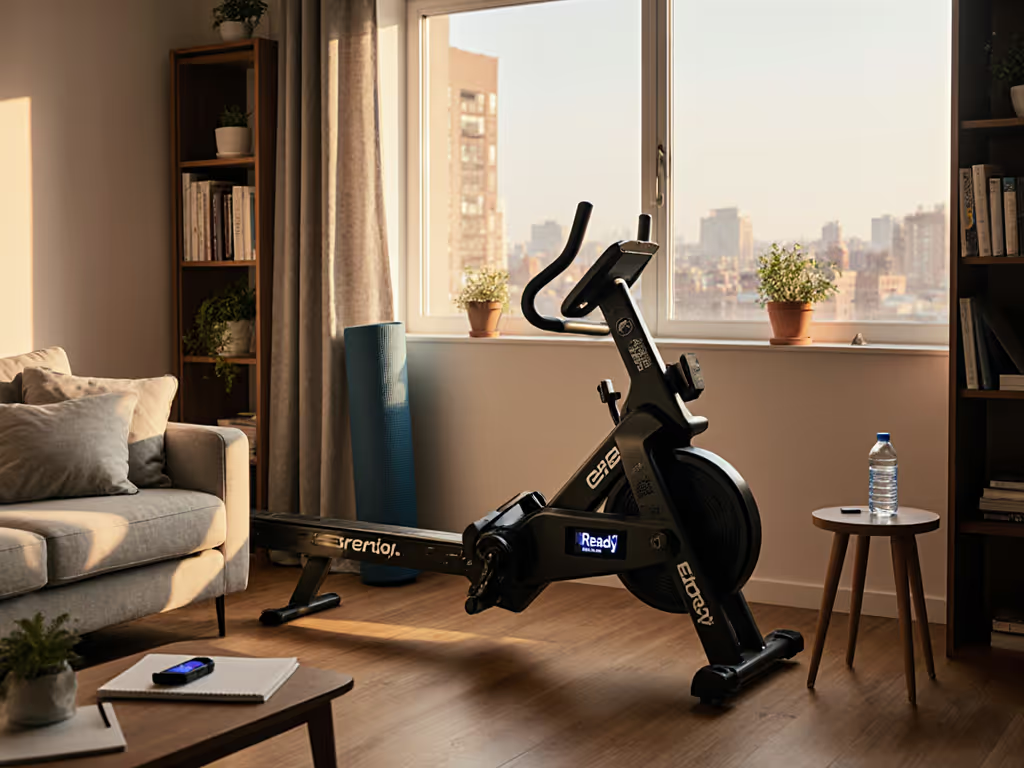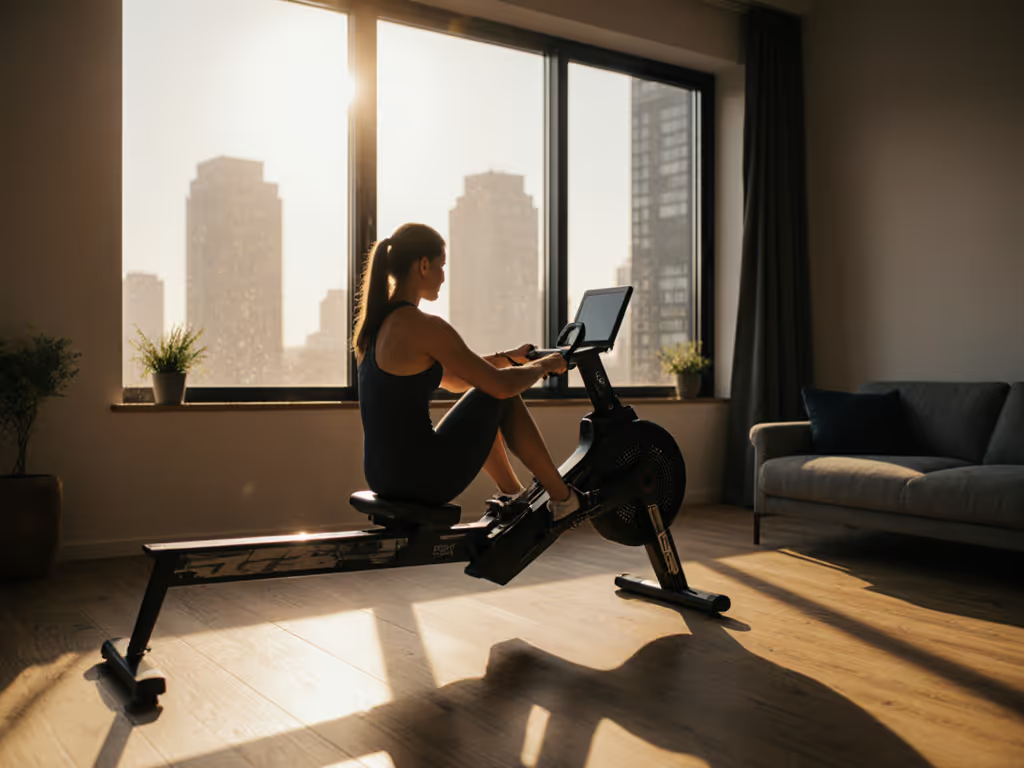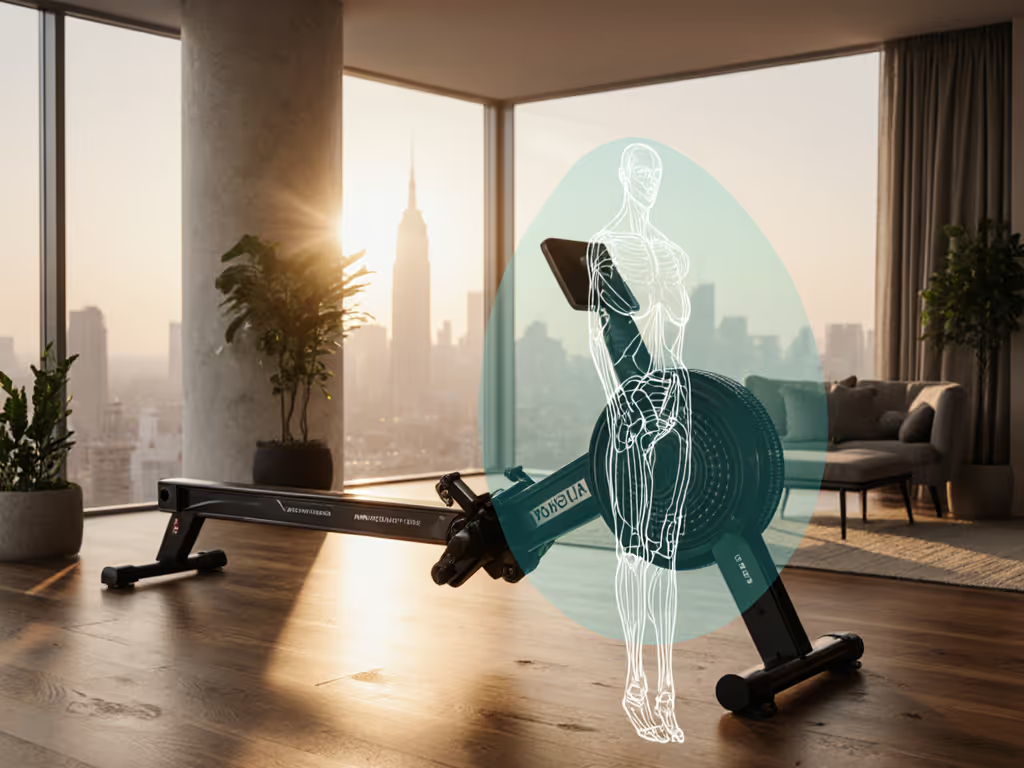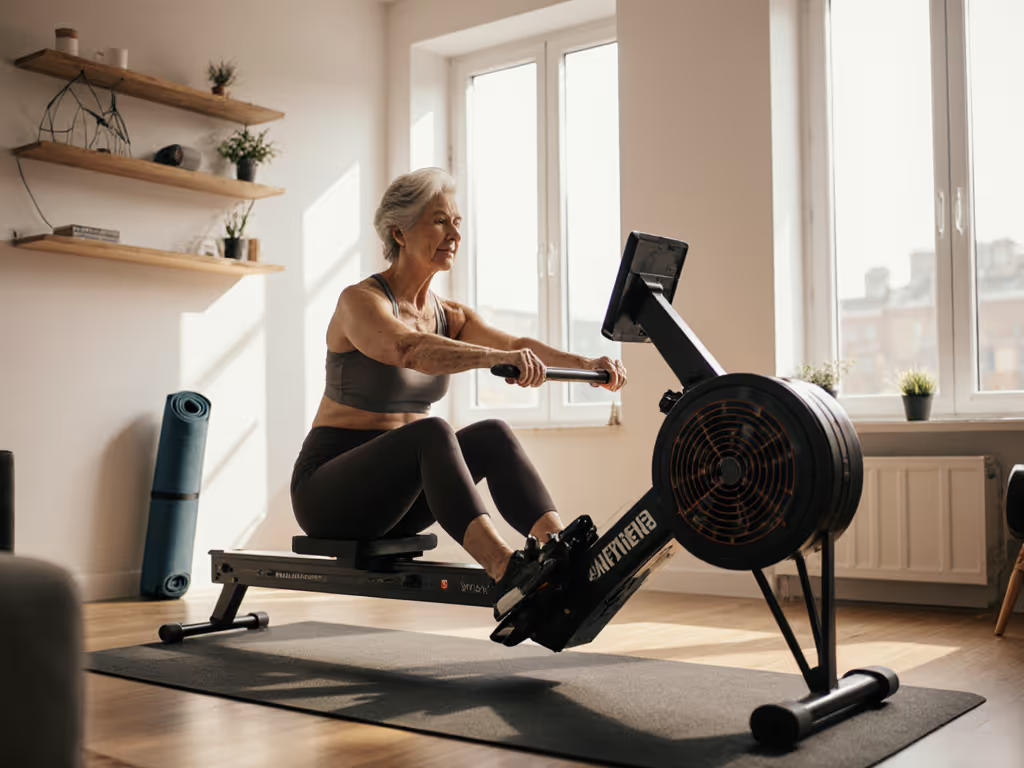
Rowing Metrics: Comfort Leads to Consistent Gains
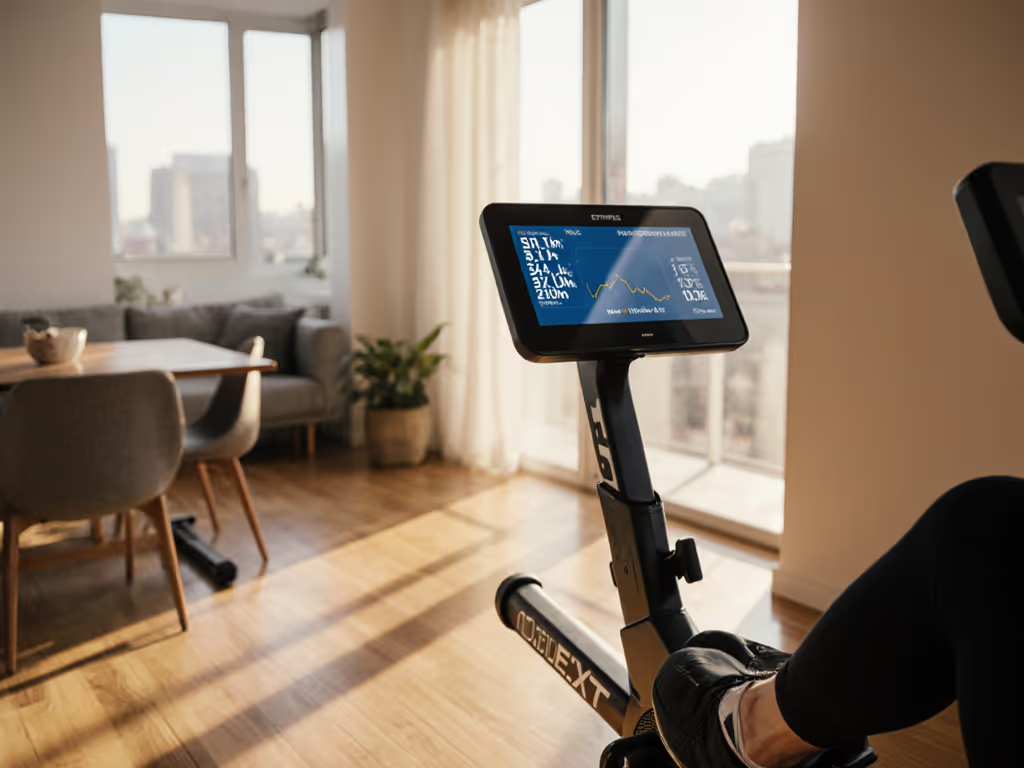
When your lower back protests after 15 minutes on the rower, no amount of split time data matters. As someone who discovered rowing's stress-relief magic only to hit a wall with nagging discomfort, I've learned that rowing machine metrics mean nothing without rowing performance tracking that includes your comfort. Your split time, watts, and stroke rate tell half the story. The other half lives in your hip angles, foot placement, and handle grip (measurable comfort metrics) that determine whether you'll actually repeat tomorrow's workout. This guide teaches you to read both sets of data, because sustainable progress starts where comfort meets consistency.
Step 1: Decode Your Monitor Beyond the Basics
Your rowing machine display shows familiar numbers: split time (time per 500m), stroke rate (SPM), and watts. But beginners fixate on these while ignoring their body's signals. A 2:30/500m split means little if you're rounding your spine or jamming your knees. Instead, treat these metrics as indirect comfort indicators:
- Split time: Consistent splits for 20+ minutes suggest sustainable mechanics. Wild fluctuations (e.g., 2:20 to 2:45) often mean you're compensating for poor fit.
- Stroke rate: 24-28 SPM is ideal for steady-state work, but only if your hip angle stays at 90-100° at the catch. Higher rates with compromised angles waste energy.
- Watts: Power output should rise steadily as fitness improves. If watts plateau while perceived effort increases, check your ankle dorsiflexion (aim for 10-15° at the catch).
Remember: A Concept2 PM5 monitor gives reliable data only when your body is in a repeatable position. If you need a refresher on the stroke phases, see our catch-to-recovery form guide. Metrics become meaningful when your contact points (seat, feet, hands) are consistent session to session.
Step 2: Measure Your Comfort Metrics
Comfort isn't subjective when you quantify it. These four body measurements, taken with a simple goniometer app, transform guesswork into actionable data:
- Hip angle at catch: 90-100° for most bodies. Below 85° risks lower back strain; above 105° reduces power transfer.
- Fix: Raise/lower foot stretchers by 1cm increments until angle hits range.
- Knee angle at finish: 120-135°. Sharp knee pain indicates excessive compression.
- Fix: Shorten rail length or adjust seat height (if possible).
- Ankle angle at catch: 10-15° dorsiflexion. Flat feet or heel lift? Your footplates are too high or stretched.
- Fix: Adjust heel loops and stretcher height to maintain foot contact.
- Seat pressure distribution: Use a $20 pressure mat. >60% weight on sit bones = optimal. More on thighs = seat too low.
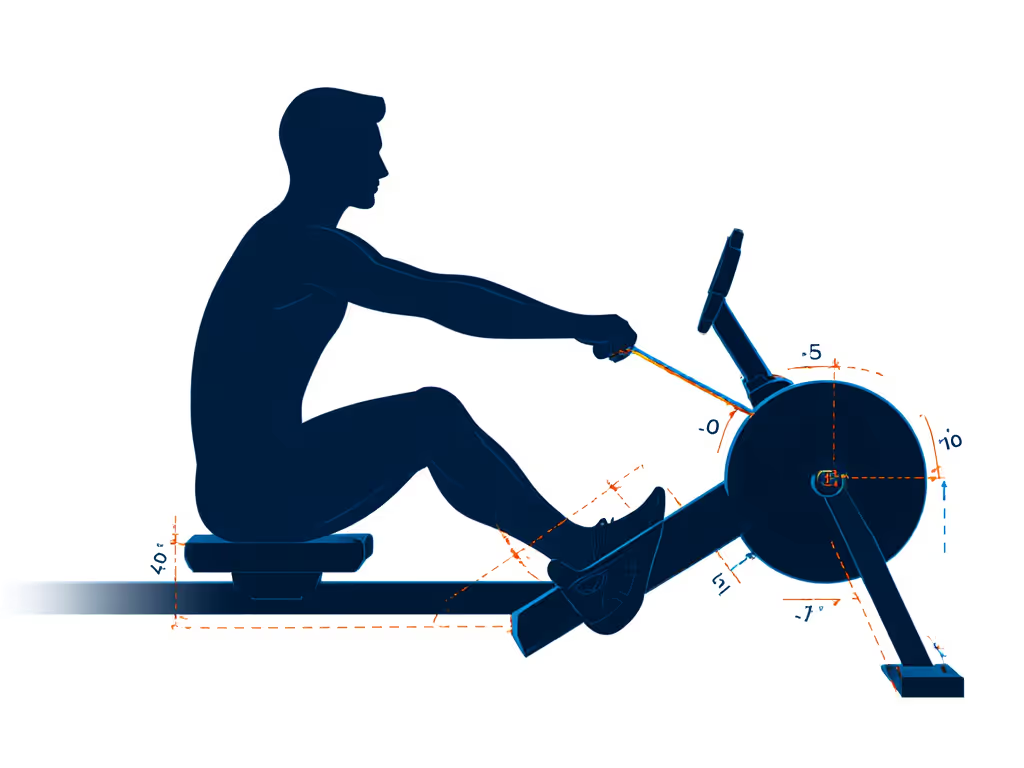
These comfort metrics became my breakthrough when back twinges forced me off the erg. Measuring revealed my foot stretchers were 2cm too high, forcing excessive hip tuck. Small adjustments (spacers under the rail, contouring my seat edge) fixed it. Now I profile ergonomics first, because data-driven comfort isn't about feeling "good," it's about creating comfort that removes excuses to skip workouts.
Step 3: Set Goals That Respect Your Body's Limits
Most "how to read rowing machine data" guides push aggressive targets, ignoring biomechanical ceilings. Instead, build your rowing goals around your personalized angle ranges:
- For endurance: Maintain stroke rate within 2 SPM of your comfortable rate (e.g., 26±2 SPM) for 20+ minutes. Track consistency, not speed.
- For technique: Perform 500m pieces with <5% split variance while holding hip angle within 5° of your target.
- For strength: 10 x 1:00 power strokes at 85% max watts, but only if knee angle stays >110° at the finish.
These goals prevent the "I'll just power through" mentality that causes injury. If your metrics dip because angles drift, stop and adjust. A 2024 Concept2 user study showed athletes who prioritized comfort metrics maintained 89% of their planned training volume versus 63% for those ignoring fit issues.
Step 4: Optimize Stroke Rate Without Sacrificing Form
Rowing stroke rate optimization often gets reduced to "higher = better." But beyond 30 SPM, most recreational rowers lose power due to rushed recovery. Here's how to find your sweet spot:
- Test at different rates: Row 3 x 500m at 24, 28, and 32 SPM. Note:
- Average split time
- Hip angle consistency (use phone video)
- Perceived effort (1-10 scale)
-
Calculate efficiency: (Your watts) ÷ (SPM). Higher = better power transfer. Target >8.5 watts/SPM for steady state.
-
Adjust for comfort: If your efficiency drops at 30 SPM but hip angle stays stable, that's your ceiling for now. Push rate only when form holds.
This approach prevents the common mistake of mimicking race day rates in training. Elite rowers hit those numbers because their body angles are optimized, not the other way around.
Step 5: Track Long-Term Progress Through Dual Metrics
True progress tracking merges performance data with comfort metrics. Create a simple log:
| Date | 2K Time | Avg. SPM | Hip Angle | Seat Pressure | Notes |
|---|---|---|---|---|---|
| Oct 1 | 8:15 | 26 | 95° | 65% sit bones | Felt strong |
| Oct 8 | 8:09 | 26 | 92° | 70% sit bones | Rail raised 1cm |
Notice how the time improved after adjusting rail height? That's comfort enabling consistency. When both columns trend positively, you've built the feedback loop where reliable data meets sustainable effort.
Good fit turns discipline into a habit you actually keep.
When your rowing machine trainer sessions feel effortless (not easy, but flowing), you stop counting minutes. That's the power of comfort metrics: they transform arbitrary numbers into proof that your body is ready for more. Whether you're using a Concept2 PM5 or another rowing machine trainer with reliable data, what matters is how the metrics reflect your repeatable position.
Next steps: Record your hip and knee angles during your next workout. Notice how they shift as fatigue sets in. Then, tweak one variable (foot height, rail position) and retest. Share your findings in our free community forum, where real talk about body mechanics meets practical data.
Related Articles

